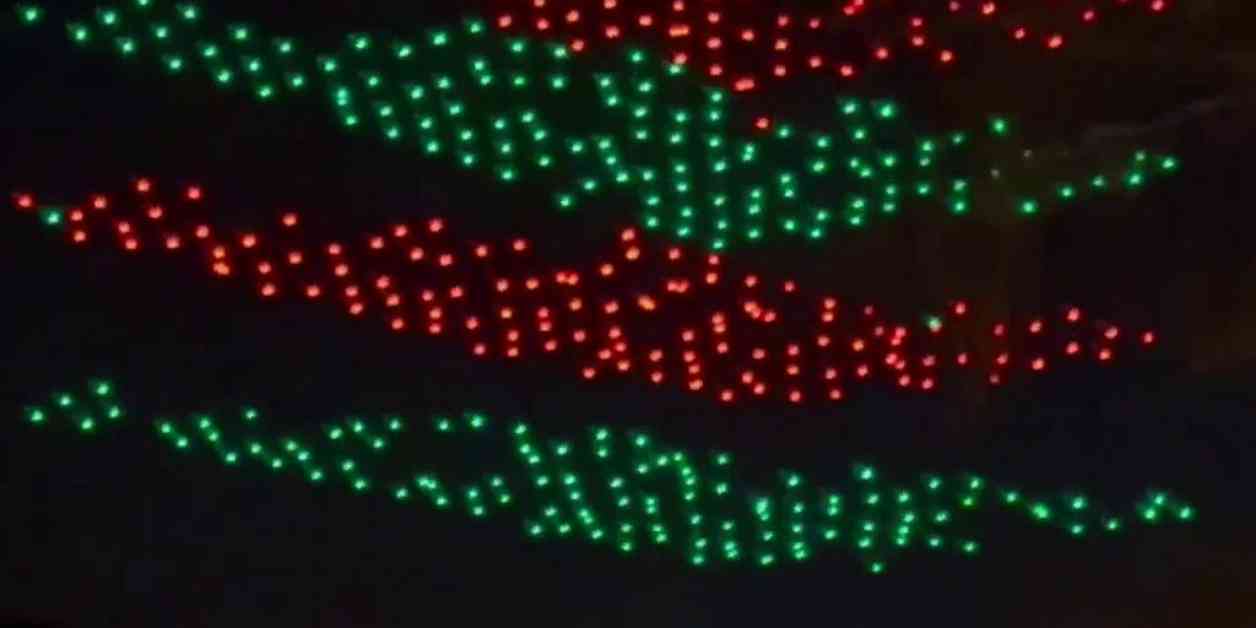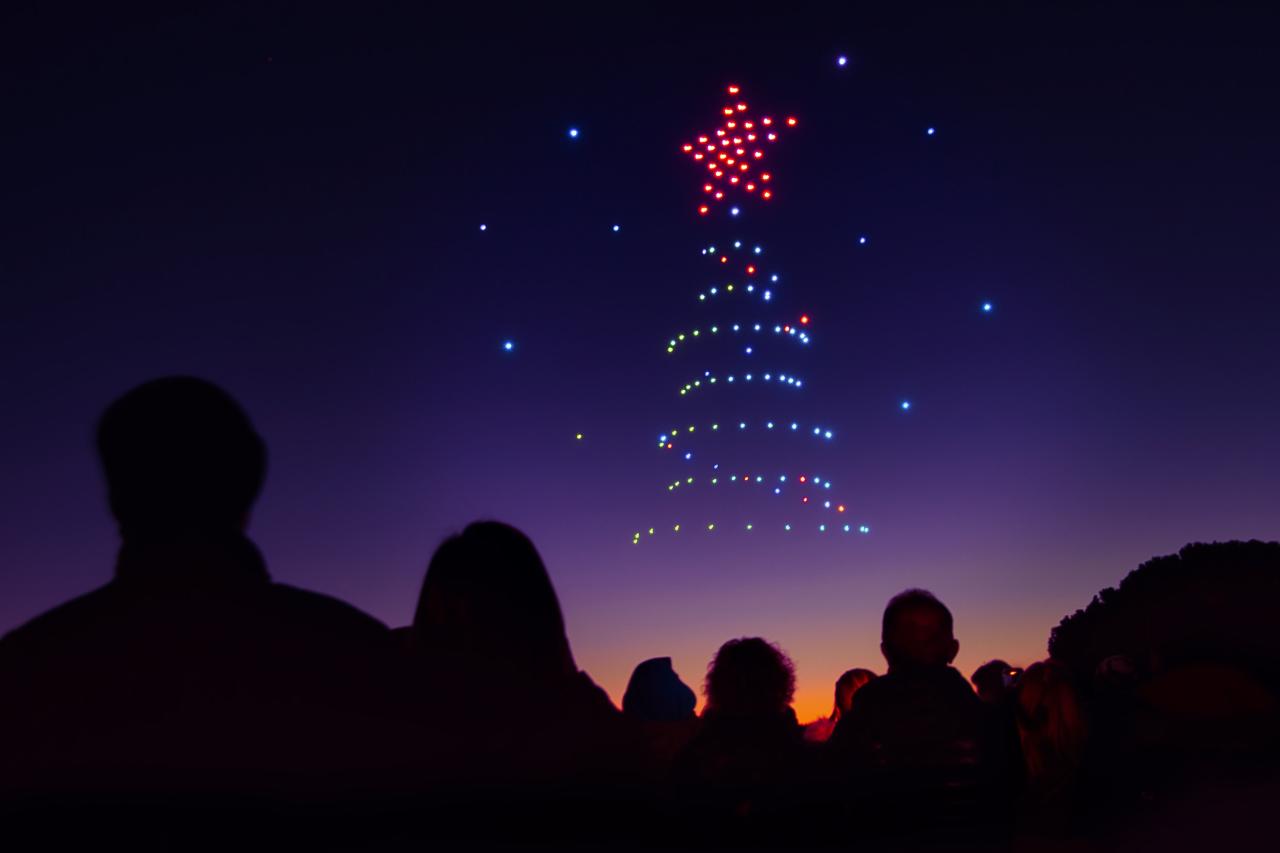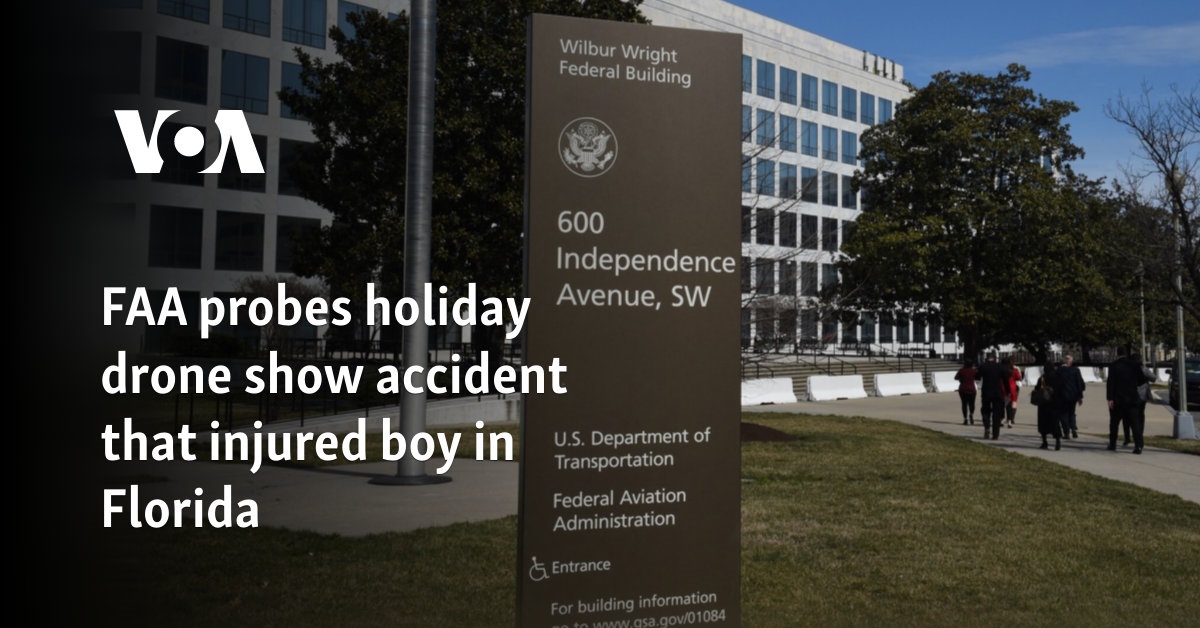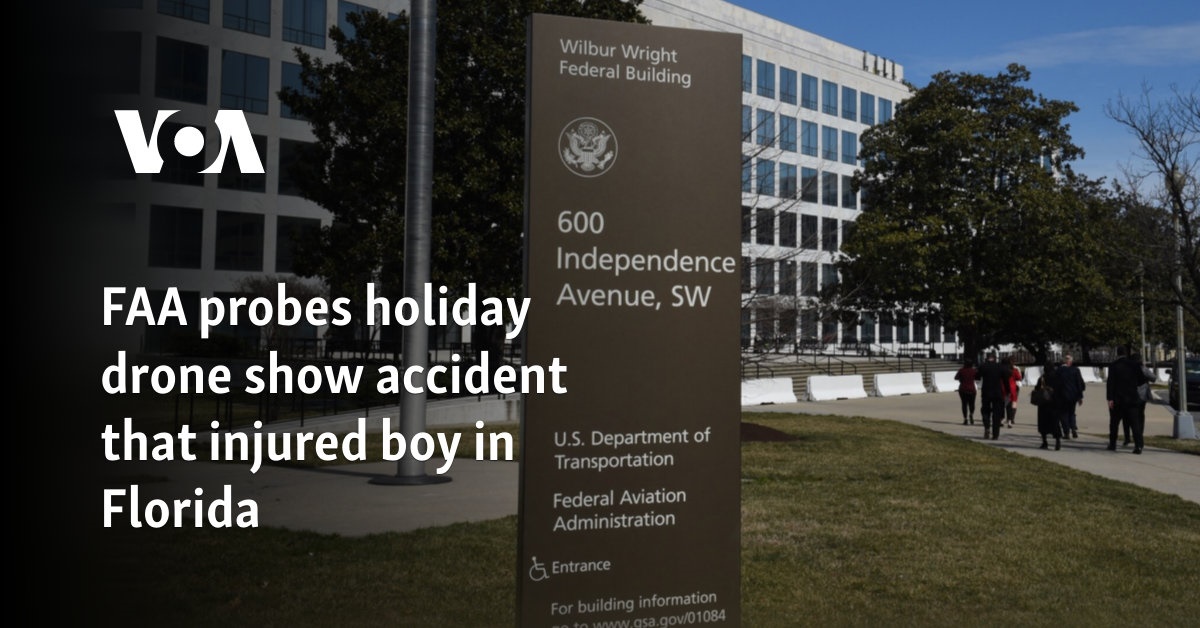Drone show accidents, while relatively rare, highlight critical safety concerns within the rapidly evolving world of drone technology. This analysis delves into the various factors contributing to these incidents, from technological malfunctions and human error to inadequate safety protocols and insufficient emergency response procedures. Understanding these contributing elements is paramount to mitigating future risks and ensuring the safe and responsible operation of drone shows globally.
We will explore the different types of accidents, ranging from minor malfunctions to catastrophic failures resulting in injuries or fatalities. Furthermore, we’ll examine existing safety regulations, pilot training standards, and technological advancements aimed at preventing accidents. A comprehensive look at human error, emergency response protocols, and insurance liability will round out our investigation, ultimately aiming to provide a clearer understanding of how to enhance the safety of drone shows worldwide.
Drone Show Accidents: A Comprehensive Analysis

Drone shows, while captivating spectacles of light and technology, are not without risk. Accidents, though infrequent, can range from minor malfunctions to catastrophic events. Understanding the causes, prevention strategies, and response protocols is crucial for ensuring the safe and successful execution of these increasingly popular displays.
Types of Drone Show Accidents
Drone show accidents can be categorized by severity and underlying causes. Malfunctions can stem from various sources, leading to a spectrum of outcomes.
- Minor Malfunctions: These involve minor glitches like a single drone losing synchronization or experiencing a brief power outage, often resolved without significant impact on the overall show.
- Significant Damage: This category includes incidents resulting in substantial damage to drones, requiring repairs or replacement. Collisions between drones or with other objects fall under this category.
- Injuries: Accidents causing physical harm to individuals, whether spectators or operators, constitute a serious concern. Falling drones or debris pose the most significant risk.
- Fatalities: While rare, fatalities are the most severe outcome, typically resulting from a drone falling onto a person or causing other catastrophic damage.
For example, a GPS malfunction might lead to a single drone straying from its programmed path, resulting in minor damage if it lands harmlessly. Conversely, a battery fire could cause multiple drones to crash, potentially resulting in significant damage or even injuries.
| Accident Type | Cause | Severity | Outcome |
|---|---|---|---|
| Single Drone Malfunction | GPS Error | Minor | Drone landed safely; minimal show disruption. |
| Multiple Drone Collision | Software Glitch | Significant Damage | Several drones damaged; show temporarily halted. |
| Drone Crash into Spectator Area | Pilot Error | Injuries | Spectators injured; show immediately cancelled. |
| Drone Fire | Battery Failure | Significant Damage & Potential Injuries | Extensive drone damage; potential for fire spread and injuries. Show cancelled. |
Safety Protocols and Regulations

Robust safety regulations and protocols are vital for mitigating risks. These vary across jurisdictions but generally encompass pilot training, pre-flight checks, and emergency response procedures.
- Pilot Training and Certification: Rigorous training programs are essential, ensuring pilots possess the necessary skills and knowledge to handle emergencies.
- Pre-flight Checks and Maintenance: Thorough inspections of drones, batteries, and software are crucial before each show. Regular maintenance schedules are also necessary.
- Emergency Response Plan: A well-defined plan, including communication protocols and procedures for securing the accident site, is critical.
A comprehensive pre-flight checklist might include:
- Battery level checks
- Software updates and functionality tests
- GPS signal strength verification
- Drone inspection for physical damage
- Communication system tests
- Emergency shutdown procedures review
- Weather monitoring and contingency plans
Technological Failures and Mitigation, Drone show accident

Technological failures are a significant concern. Addressing these risks requires a multi-faceted approach.
- GPS Malfunctions: Redundant navigation systems and alternative positioning methods can mitigate GPS failures.
- Battery Failures: Using high-quality batteries, implementing battery monitoring systems, and having backup batteries readily available are crucial.
- Software Glitches: Regular software updates, thorough testing, and fail-safe mechanisms are essential.
- Weather Conditions: Shows should be postponed or cancelled in adverse weather conditions (high winds, rain, etc.).
Human Error and its Impact

Human error plays a substantial role in accidents. Careful planning, training, and communication are vital to minimize its impact.
- Pilot Mistakes: Improper handling, inadequate situational awareness, and poor decision-making contribute significantly to accidents.
- Inadequate Planning: Insufficient planning, including flight path design and emergency procedures, increases risk.
- Poor Communication: Effective communication between pilots and ground crew is crucial for coordinating operations and responding to emergencies.
For instance, a scenario involving a pilot’s failure to properly account for wind conditions could lead to a drone veering off course and colliding with another drone. This could have been prevented with thorough pre-flight wind assessments and contingency planning.
Emergency Response and Procedures
Effective emergency response is paramount. This requires clear roles and responsibilities, and a structured approach.
- Roles and Responsibilities: Clearly defined roles for pilots, ground crew, and emergency personnel ensure coordinated action.
- Securing the Accident Site: The accident site needs to be secured to prevent further incidents and ensure public safety.
- Post-Accident Investigation: A thorough investigation is essential to identify causes, learn from mistakes, and prevent future occurrences.
Insurance and Liability
Comprehensive insurance is crucial for drone show operators to mitigate financial risks associated with accidents.
| Policy Provider | Coverage | Premium | Exclusions |
|---|---|---|---|
| Example Provider A | Liability, Property Damage | Variable | Intentional Acts |
| Example Provider B | Liability, Hull Damage | Variable | Acts of God (certain conditions) |
Case Studies of Drone Show Accidents
Analyzing past accidents provides valuable insights into risk factors and effective mitigation strategies. While specific details of accidents are often kept confidential, general patterns emerge.
One notable case involved a large-scale drone show where a software glitch caused a cascade of collisions, resulting in significant damage to multiple drones. The post-accident investigation highlighted the need for more robust software testing and redundancy systems. The scene was chaotic, with a flurry of falling drones creating a shower of sparks and broken parts against the night sky.
The resulting damage was extensive, requiring significant repairs and delaying future shows. This case underscored the importance of thorough pre-flight checks and the need for multiple layers of safety protocols to prevent a chain reaction of failures.
Recent drone show accidents highlight the importance of reliable technology and meticulous planning. The safety and precision offered by companies like Sky Elements Drones, sky elements drones , are crucial in mitigating such risks. Properly maintained and expertly operated drones are essential to prevent future incidents and ensure spectacular, yet safe, aerial displays.
The analysis of drone show accidents reveals a complex interplay of technological, human, and regulatory factors. While technological advancements offer increased safety features, human error and inadequate safety protocols remain significant concerns. A multi-pronged approach, encompassing robust safety regulations, rigorous pilot training, advanced technological safeguards, and effective emergency response procedures, is crucial for minimizing the risk of future accidents and ensuring the continued enjoyment and safety of drone light shows.
Ongoing research and the sharing of best practices are vital to continuously improve safety standards within this exciting and dynamic field.
Popular Questions
What is the average cost of insurance for a drone show?
The cost varies significantly based on factors like the number of drones, show complexity, and operator experience. It’s best to obtain quotes from multiple insurance providers.
Are there specific licenses needed to operate drones in a show?
Drone show accidents, while thankfully rare, highlight the potential risks associated with unmanned aerial vehicles. The recent incidents underscore the need for robust safety protocols, a point further emphasized by considering the very different context of a deliberate attack, such as the kazan drone attack , which showcases the potential for malicious use. Understanding both accidental malfunctions and intentional misuse is crucial for improving drone safety regulations and preventing future incidents.
Licensing requirements differ by country and region. Check with your local aviation authority for specific regulations.
What are the penalties for violating drone show safety regulations?
Penalties can range from fines to suspension of operating licenses, depending on the severity of the violation and the jurisdiction.
How long does a typical post-accident investigation take?
Recent drone show accidents highlight the critical need for robust safety protocols. Understanding real-time flight conditions is paramount, and resources like the cobequid pass camera offer valuable insights into environmental factors that can impact drone operations. Analyzing data from such sources could significantly contribute to preventing future mishaps in drone shows and other aerial applications.
The duration depends on the complexity of the accident and the investigative process, but it can range from several weeks to months.
